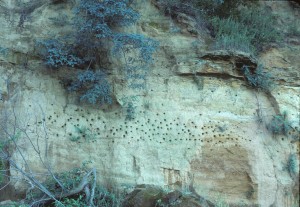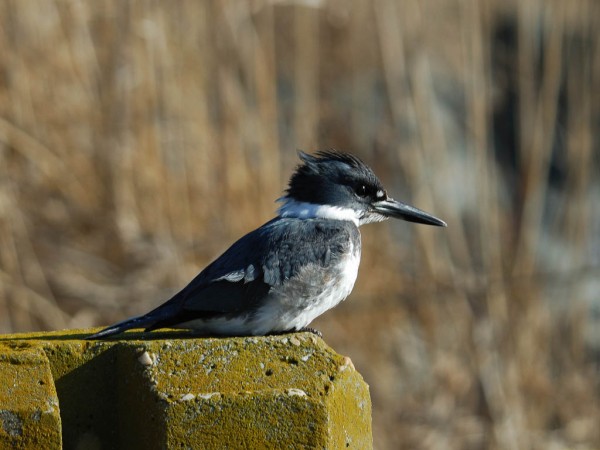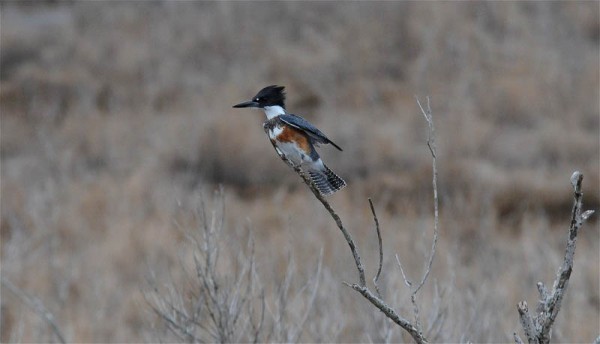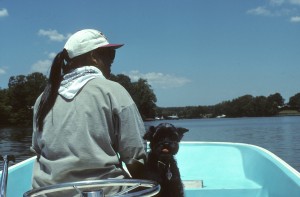Historic database of bank-dependent birds in Chesapeake Bay
Osprey and menhaden in Chesapeake Bay
January 1, 2009Bald Eagle Concentration Areas in the Chesapeake Bay
January 3, 2009
Written by Bryan Watts
January 2, 2009

Northern Rough-winged swallow. Photo by dorl.merr.info.
Throughout the Chesapeake Bay watershed, dynamic shorelines are often considered to be problematic. Engineering structures such as groins, jetties, and seawalls are used to stabilize erosional shorelines to protect associated uplands or to improve waterways. In addition, a commonly accepted practice designed to reduce sediment loading and hence improve water quality is the grading of exposed banks, bluff, and cliffs. This practice shears off steep banks to reduce sediment input into waterways and is most often implemented on shorelines that have an erosion rate in excess of 1m/yr. However, shear, eroded banks provide critical habitat for several wildlife species throughout the Chesapeake Bay. Over the last several decades, expansion of the human population within waterfront areas and the desire to control shoreline erosion has greatly reduced the availability of wild banks for these species.

Bank swallow colony along the lower Chester River on the Eastern Shore of Maryland. Photo by Bryan Watts.
Exposed banks provide nesting habitat for the belted kingfisher, rough-winged swallow, and bank swallow. Both swallow species are neotropical migrants that have experienced declines within the mid-Atlantic region. The Center for Conservation Biology conducted a systematic survey for these species along more than 900 Chesapeake Bay tributaries in order to determine their status, distribution, and habitat requirements within the Bay region. In total, the survey included more than 19,000 km of shoreline. Exposed banks were mapped and surveyed while piloting a small boat parallel to the shoreline. This definitive assessment of exposed banks and the species that depend on them will serve as a benchmark for future comparisons.

Male belted kingfisher, Chincoteague National Wildlife Refuge, Virginia. Photo by Chris Kaufmann.

Female belted kingfisher. Photo by Bill Portlock.

Marian Watts (and Sawyer) map bank segments from the bow of a Boston Whaler near the Elk River. Photo by Bryan Watts.
More than 1400 exposed banks were mapped, characterized, and surveyed during two breeding seasons. Bank-nesting birds were widely distributed with more than 50% of all banks surveyed having at least one species present. However, distribution differed between species. Rough-winged swallows were widely distributed throughout the Bay, occupying 551 banks but with low burrow densities within a given site. Belted kingfishers were also widely distributed, occupying 303 banks. Bank swallows were highly colonial with colonies ranging up to 500 burrows but were found within only 19 locations centered on the upper Eastern Shore of Maryland. Differences between these species in both distribution and habitat use call for different conservation strategies. The results of field surveys and the digital atlas that followed will serve as a benchmark for future comparisons throughout the Bay.

This wild bank has been sheared off at the waters’ edge to accommodate a house. Such treatment suppresses the natural dynamic of the shoreline and makes them unsuitable for bank-nesting birds. Photo by Bryan Watts.
Conservation in highly dynamic, disturbance-prone landscapes is difficult, to a large extent, because we seek to preserve areas that are subject to regular change. Bank-dependent species require disturbance from spring floods and storms to maintain critical habitats. Policies and programs designed to suppress these dynamic cycles should be considered carefully.



